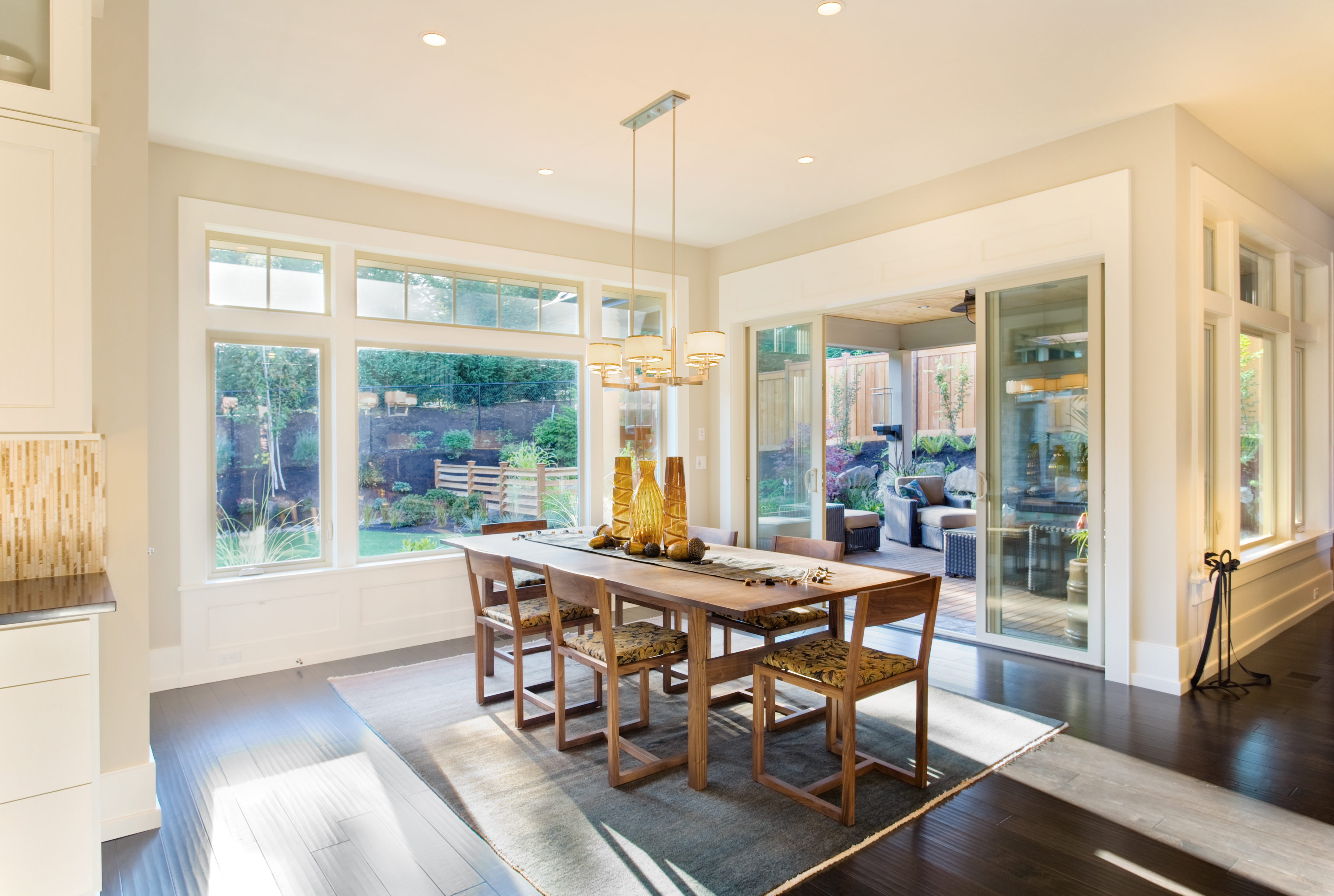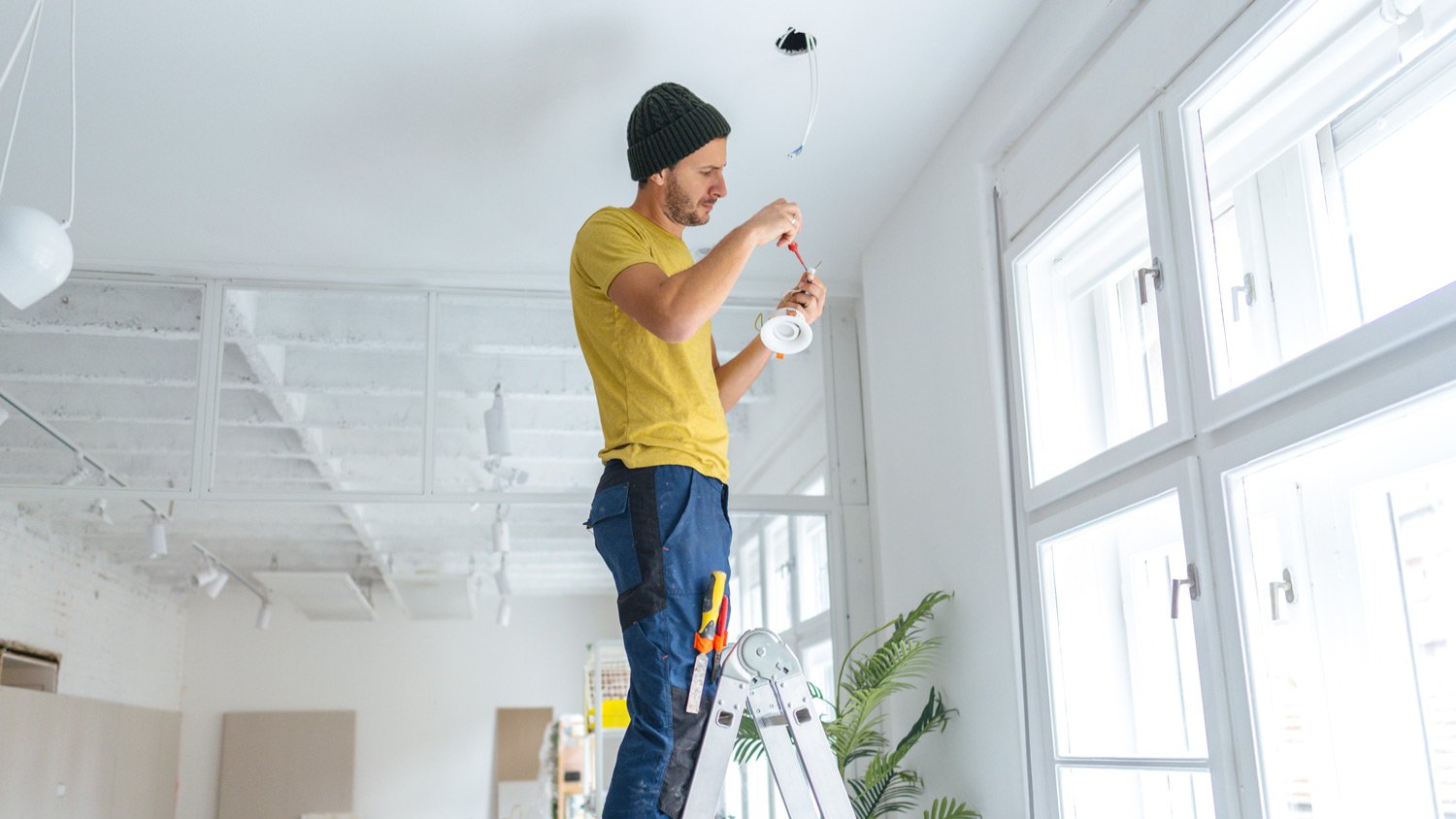
Light fixtures are important elements in any home. Find out how much it costs to install a light fixture based on factors like type, location, and labor.
The average wall sconce installation cost is $250, with most homeowners spending between $150 and $550. Key factors include fixture type, materials, labor, and wiring needs.


Wall sconce installation involves mounting a lighting fixture on your wall and connecting it to power for added ambiance and function.
The main price drivers are labor, wiring complexity, and the type of sconce you choose.
Professionally installed sconces can boost your home’s comfort, safety, and even its resale value.
Upgrading to energy-efficient fixtures can help lower your ongoing electricity use and maintenance needs.
Professional installers charge $50 to $120 per hour, depending on the complexity of the project.
This article was created using automation technology and thoroughly fact-checked and edited by an Angi Editor in accordance with our AI policy.
Wall sconce installation averages $250 per fixture, with most ranging between $150 and $550 depending on fixture type, wiring complexity, and labor rates. Homeowners may pay as little as $50 for simple installs or up to $800 for high-end or complex projects. Costs are often quoted per fixture.
Installing wall sconces is a smart way to add style, safety, and targeted lighting to your home. This guide explains what impacts the total cost, from labor rates to fixture types, and helps you plan for every step—whether you’re handling one room or the whole house.

Let’s break down the most important elements that affect what you’ll pay for wall sconce installation.
Wall sconces come in a variety of designs, each affecting installation cost:
Hardwired sconces connect directly to your home’s electrical system and require an electrician.
Plug-in sconces only need a nearby outlet and can often be installed without professional help.
Battery-operated models are even simpler but may offer less brightness or longevity.
Smart sconces, with app or voice controls, often cost more to install due to extra wiring or setup.
Outdoor sconces may require weatherproofing and additional labor.
Designer, custom, or imported sconces often raise labor and material costs. Specialty finishes or unique mounting requirements can also push the price higher.
| Sconce Type | Average Installation Cost |
|---|---|
| Hardwired | $200–$500 |
| Plug-in | $75–$200 |
| Battery-operated | $50–$150 |
| Smart | $250–$800 |
| Outdoor |
The size and wattage of your wall sconce influence installation difficulty. Larger or heavier fixtures may need reinforced mounting or extra labor to ensure safety. Higher wattage sconces sometimes require upgraded wiring, especially in older homes.
If your chosen sconce is oversized or made of heavy materials, let your installer know in advance so they can prepare for any structural adjustments.
| Sconce Size | Installation Cost Range |
|---|---|
| Lightweight | $75–$200 |
| Standard | $150–$350 |
| Heavy | $300–$800 |
Fixture material impacts both the initial purchase price and the installation process. Metal, glass, crystal, plastic, and wood are all common options.
Standard finishes like brushed nickel or painted metal are easier to install and more affordable, while premium materials or custom finishes add to both fixture and installation costs. Imported or custom-designed sconces often demand more time and skill during installation, raising your total project cost.

| Material Type | Average Fixture Cost |
|---|---|
| Metal | $50–$300 |
| Glass | $75–$400 |
| Crystal | $200–$1,000 |
| Plastic | $20–$150 |
| Wood | $100–$500 |
Labor is a significant part of the cost to install a wall sconce. A licensed electrician is recommended for any hardwired or outdoor sconce. Electricians charge $50 to $120 per hour, with minimum service fees ranging from $75 to $200. Handypeople or general contractors may handle plug-in or battery-operated sconces, often for a lower hourly rate.
Labor costs also depend on your location. Urban areas or places with a high cost of living tend to have higher labor rates. The complexity of the project matters too—if your installation requires new wiring, wall reinforcement, or work in multi-story homes, expect the price to increase. Some pros offer bundled pricing for multiple fixtures; others charge per fixture.
Preparation costs can add up, especially if the installation area needs extra attention. You might need to move furniture, protect flooring, or mark fixture locations. Walls sometimes require patching, painting, drilling, or reinforcing before a sconce can be safely installed.
Older homes may need wiring checks or have old fixtures removed, which adds to the prep time and cost. Accessibility issues—like high ceilings or hard-to-reach areas—can further increase the price. Cleanup and debris removal are sometimes included in the quote, but not always, so ask your installer what’s covered.
Several other factors can affect your total wall sconce installation cost:
Removing old fixtures or demolition work can add $20 to $100 per location.
Post-installation cleanup or debris disposal is sometimes charged separately.
Permit and inspection fees, required for some electrical work, can range from $50 to $300.
Upgrading your electrical panel or adding new circuits may add $500 to $2,000 to the project.
Wall repair or patching costs $50 to $300 after installation, depending on the extent.
Decorative add-ons like dimmers, smart switches, or custom mounting hardware cost extra.
Travel or service call fees may apply if your home is in a remote area.
Once your sconces are installed, there are a few ongoing costs to consider.
Wall sconces need regular cleaning and dusting to keep them looking their best. Bulb replacement is the most common maintenance task—LED bulbs cost $3 to $10 each and last much longer than incandescent or specialty bulbs, which can cost $1 to $20 each.
Occasionally, you’ll need to tighten screws or adjust the fixture alignment. Annual maintenance costs per fixture are minimal, ranging from $5 to $30 depending on bulb type and usage.
The main operating cost for wall sconces is electricity usage. LED sconces use much less energy than incandescent models, costing as little as $1 to $5 per year per fixture, while older bulbs can cost $10 to $20 per year.
Smart sconces with extra features may use slightly more energy, but they also offer scheduling and dimming to help reduce usage. Choosing energy-efficient bulbs and turning off lights when not in use are easy ways to keep operating costs low.
Repairs are sometimes needed if a sconce develops loose wiring, a broken switch, or a damaged fixture. Simple repairs can cost $50 to $150, while more involved electrical fixes can run $200 or more.
If a fixture is seriously damaged or outdated, replacement may be more cost-effective than repair. For electrical issues, always call a local wall sconce installer to ensure your home stays safe.
Some homeowners consider DIY installation to save on labor costs. Plug-in or battery-operated sconces are the most DIY-friendly, requiring only basic tools and skills. Hardwired installations, however, demand electrical knowledge, safety precautions, and compliance with local codes.
DIY costs include tools (such as a voltage tester, drill, and screwdrivers), materials, and possible permit fees. You might spend $25 to $100 on tools and supplies if you do not already own them.
Labor savings can be significant, but the risks are higher—mistakes can lead to electrical hazards, code violations, or voided warranties. DIY installation takes one to two hours per fixture for simple projects, but may take longer if wiring or wall repair is required.
Hire a licensed electrician for any hardwired, outdoor, or multi-fixture project to ensure your installation is safe and up to code.
Many homeowners choose to upgrade their wall sconce installation with additional features:
Adding dimmer switches or smart controls costs $50 to $200 per unit, depending on the technology and wiring required.
Upgrading to energy-efficient or smart bulbs adds $3 to $30 per bulb, but lowers long-term energy costs.
Installing several sconces at once can reduce the per-fixture labor rate, with discounts often available for bundled projects.
Decorative backplates, covers, or custom mounting hardware add $10 to $100 per fixture.
Wall repair or repainting after installation can range from $50 to $300, depending on repair needs.
Adding new wiring or circuits for additional sconces can cost $500 to $2,000 if your electrical system needs an upgrade.
Outdoor sconces require weatherproofing or specialty mounting, adding $50 to $200 per fixture.
You can lower your wall sconce installation cost with these practical steps:
Get multiple quotes from licensed electricians to compare labor rates and services.
Choose standard fixtures over custom or designer options to avoid premium material and labor costs.
Bundle multiple installations in one visit to negotiate a lower per-fixture rate.
Prepare the installation area in advance by moving furniture and clearing the workspace to save on labor time.
Opt for plug-in sconces if new wiring would push your budget too high.
Purchase fixtures and bulbs during sales or promotions to reduce upfront costs.
Consider energy-efficient bulbs to save on long-term electricity and maintenance.
Home is the most important place on earth, which is why Angi has helped more than 150 million homeowners transform their houses into homes they adore. To help homeowners with their next project, Angi provides readers with the most accurate cost data and upholds strict editorial standards. We extensively research project costs to develop the pricing data you see, so you can make the best decisions for you and your home. We rely on reputable sources, including the U.S. Bureau of Labor Statistics, academic journals, market studies, and interviews with industry experts—all to ensure our prices reflect real-world projects.
Want to help us improve our cost data? Send us a recent project quote to [email protected]. Quotes and personal information will not be shared publicly.
From average costs to expert advice, get all the answers you need to get your job done.

Light fixtures are important elements in any home. Find out how much it costs to install a light fixture based on factors like type, location, and labor.

Add a wow factor to your home with a chandelier. Chandelier installation costs depend on style, location, and labor, so learn what you can expect to budget.

Discover the average cost of lighting design, including price ranges, key cost factors, and tips to help homeowners budget for their lighting project.

If you’re planning to install recessed lighting, one of the first things you’ll do is figure out how many recessed lights you need. Here’s how to do that.

If your ceiling fan light flickers, something may be wrong with the equipment, circuit, or electrical system. Use this guide to find the cause and the solution.

Changing a light bulb seems straightforward, but challenges can pop up. In some cases, hiring a professional light bulb changing service is a good option.